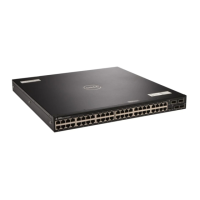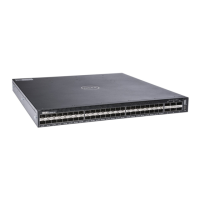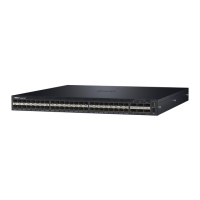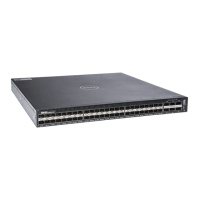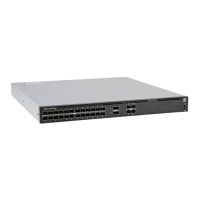Example
Dell#conf
Dell(conf)#ipv6 router ospf 1
Dell(conf-ipv6-router_ospf)#timer spf 2 5
Dell(conf-ipv6-router_ospf)#
Dell(conf-ipv6-router_ospf)#show config
!
ipv6 router ospf 1
timers spf 2 5
Dell(conf-ipv6-router_ospf)#
Dell(conf-ipv6-router_ospf)#end
Dell#
Enabling IPv6 Unicast Routing
To enable IPv6 unicast routing, use the following command.
• Enable IPv6 unicast routing globally.
CONFIGURATION mode
ipv6 unicast routing
Assigning IPv6 Addresses on an Interface
To assign IPv6 addresses to an interface, use the following commands.
1. Assign an IPv6 address to the interface.
CONF-INT-type slot/port mode
ipv6 address ipv6 address
IPv6 addresses are normally written as eight groups of four hexadecimal digits; separate each group
by a colon (:).
The format is A:B:C::F/128.
2. Bring up the interface.
CONF-INT-type slot/port mode
no shutdown
Assigning Area ID on an Interface
To assign the OSPFv3 process to an interface, use the following command.
The ipv6 ospf area command enables OSPFv3 on an interface and places the interface in the
specified area. Additionally, the command creates the OSPFv3 process with ID on the router. OSPFv2
requires two commands to accomplish the same tasks — the
router ospf command to create the
OSPF process, then the network area command to enable OSPFv2 on an interface.
NOTE: The OSPFv2 network area command enables OSPFv2 on multiple interfaces with the single
command. Use the OSPFv3 ipv6 ospf area command on each interface that runs OSPFv3.
Open Shortest Path First (OSPFv2 and OSPFv3)
713
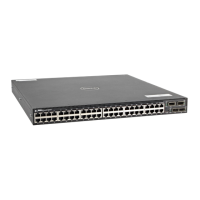
